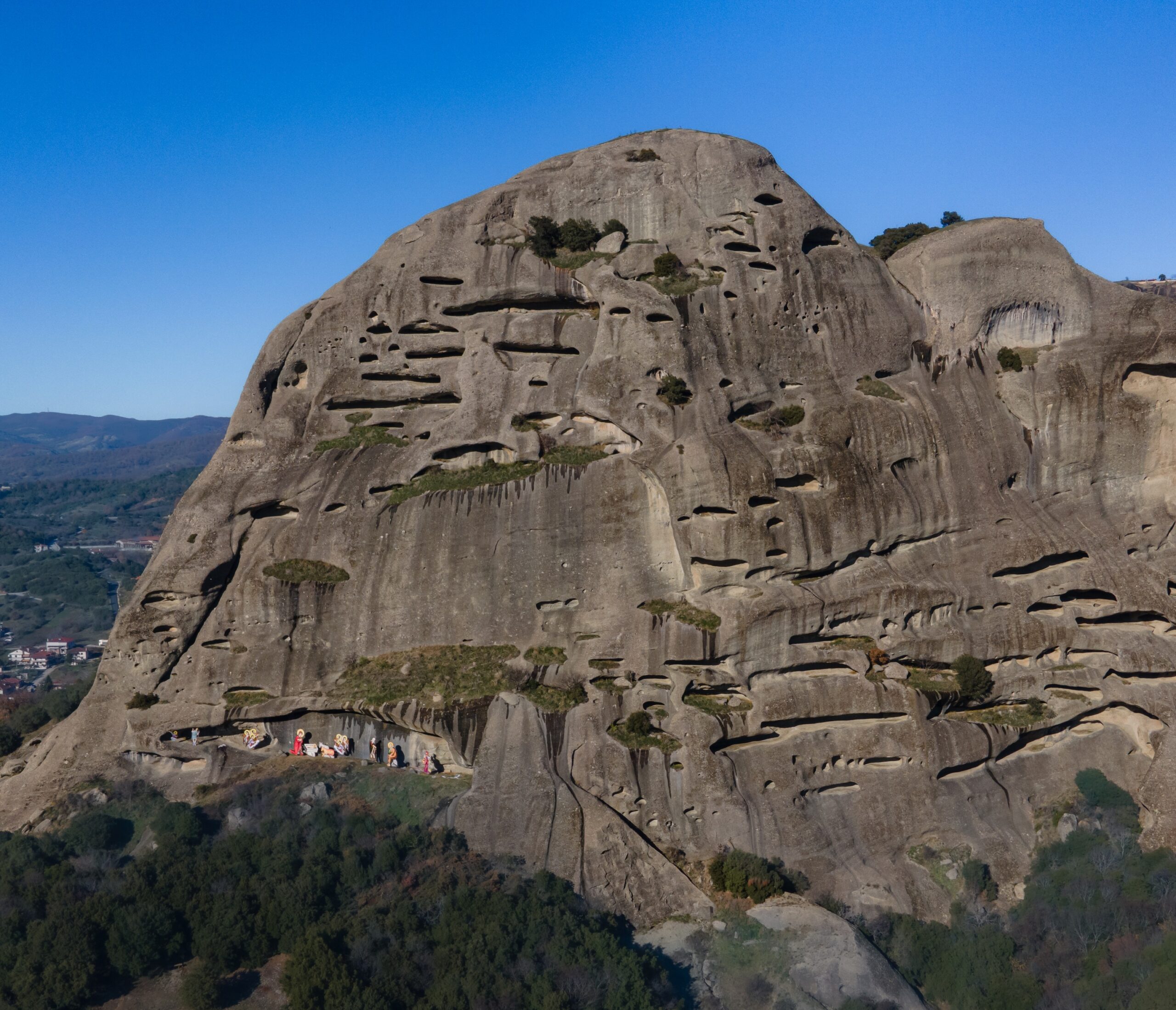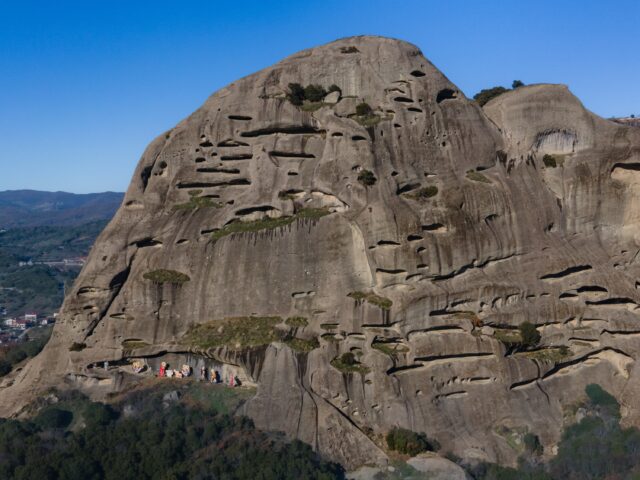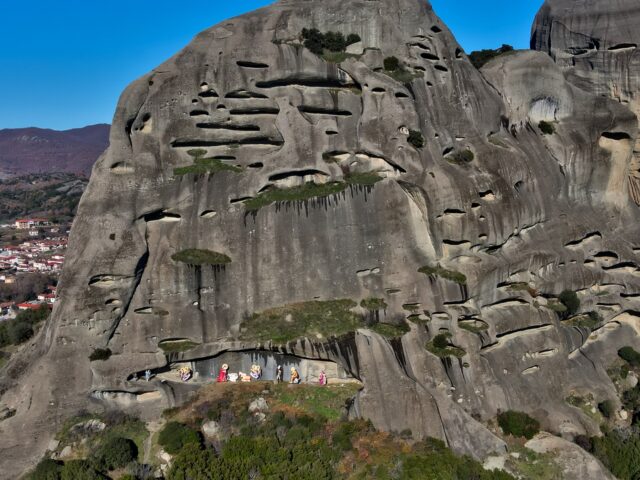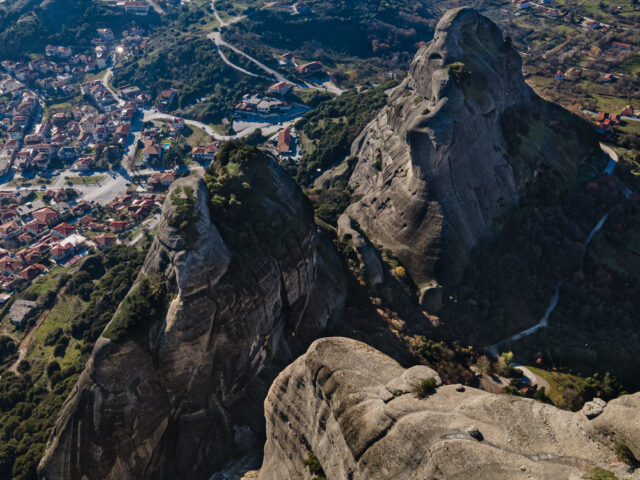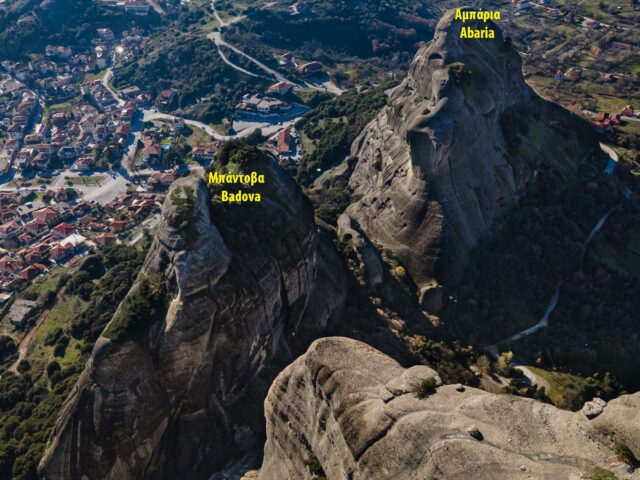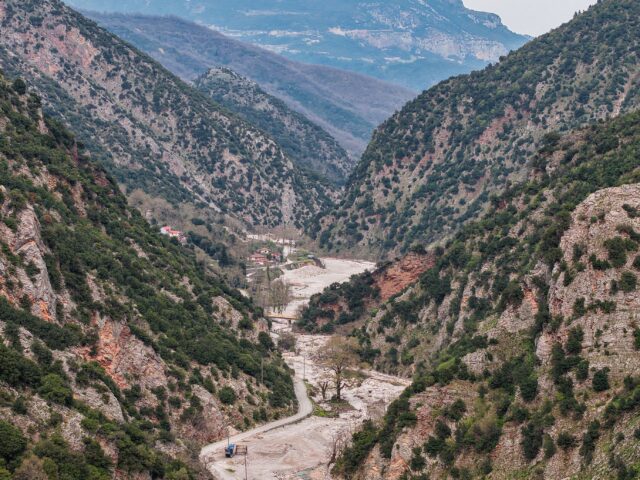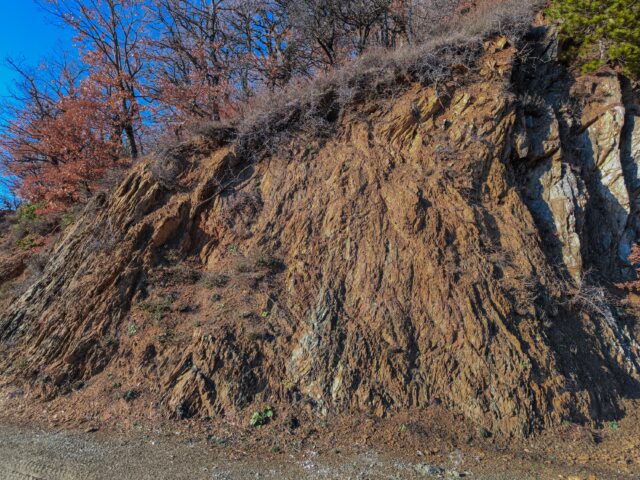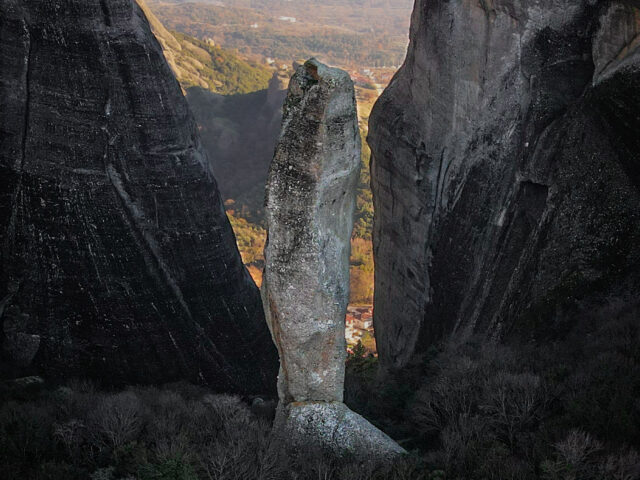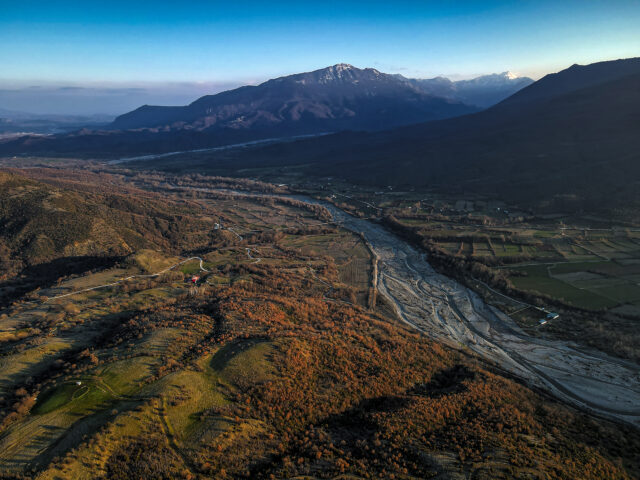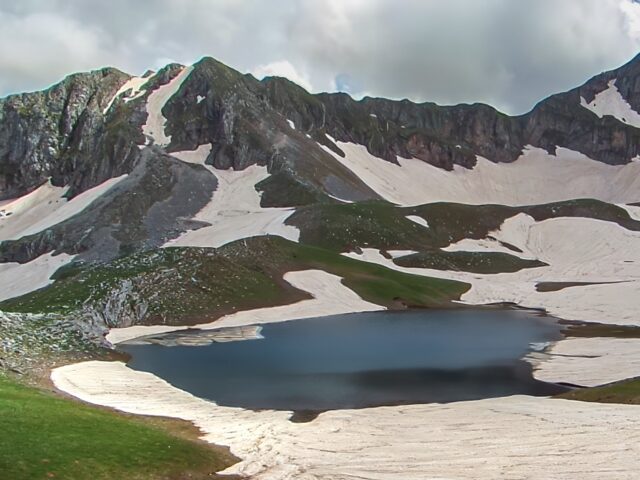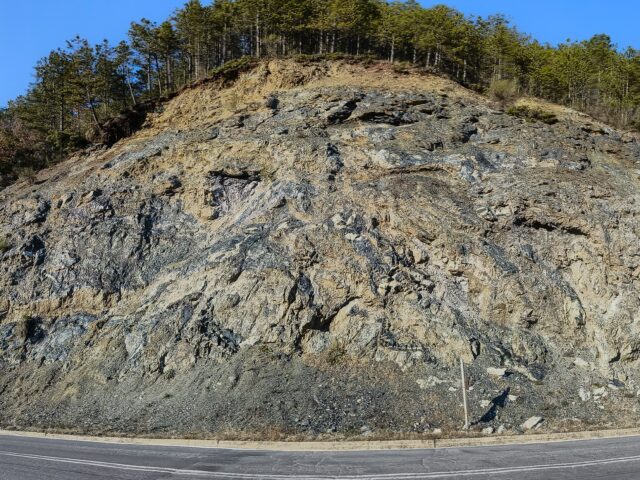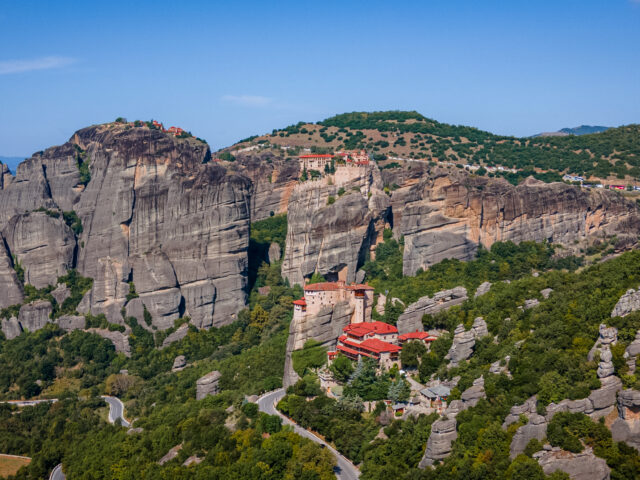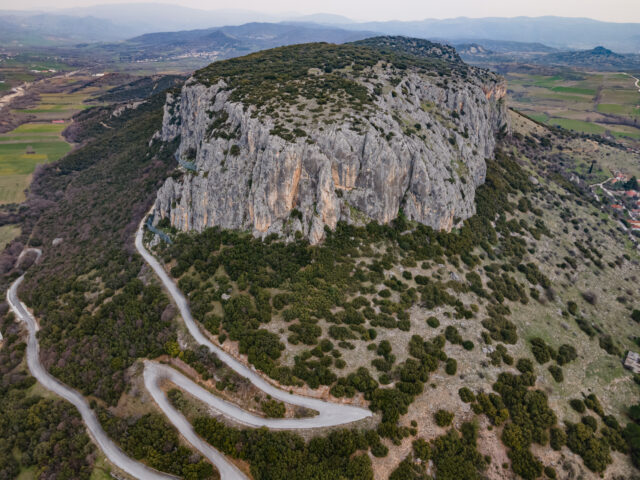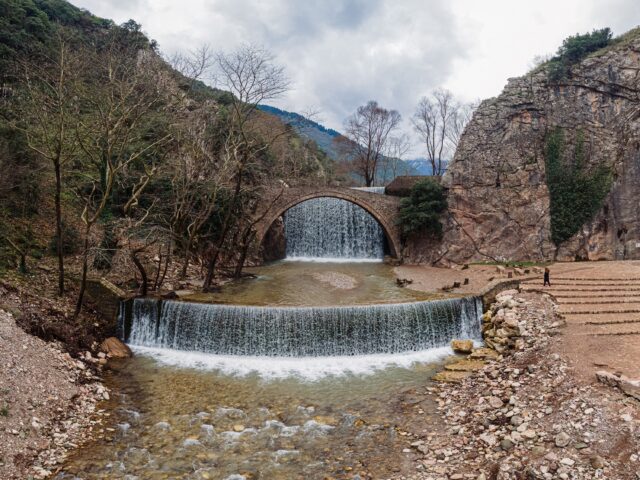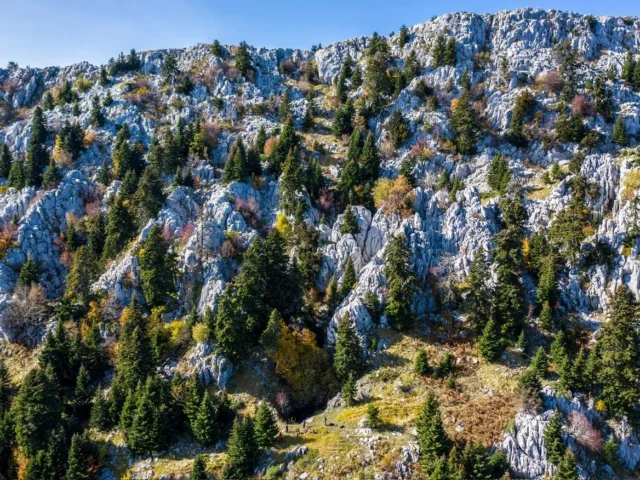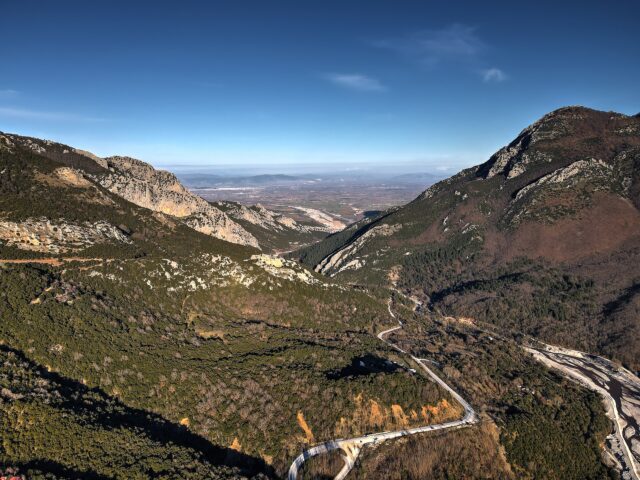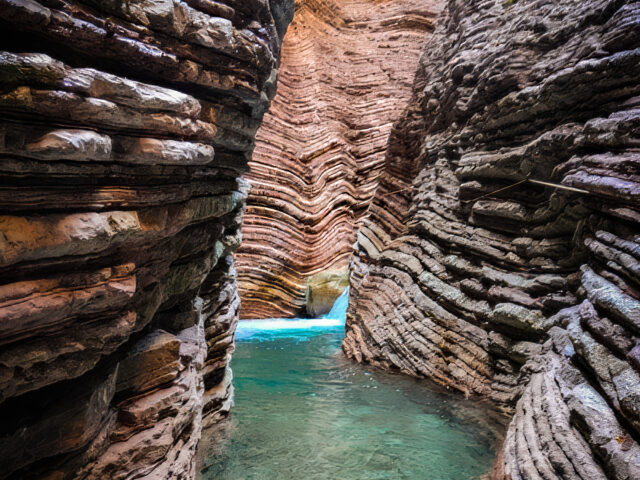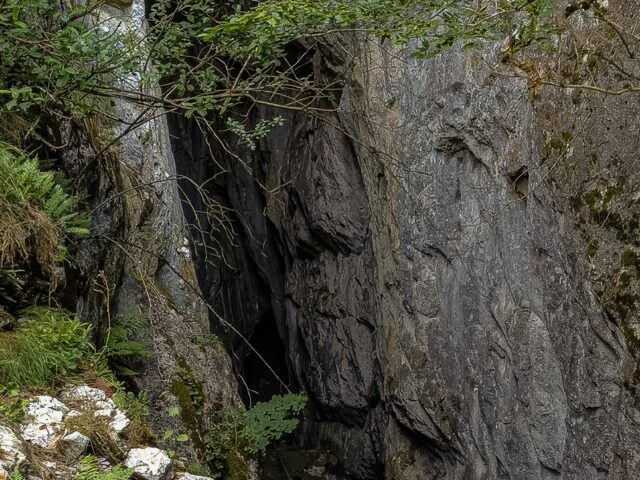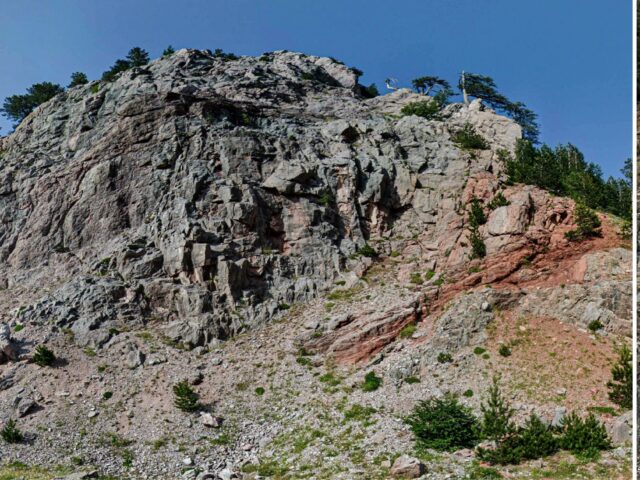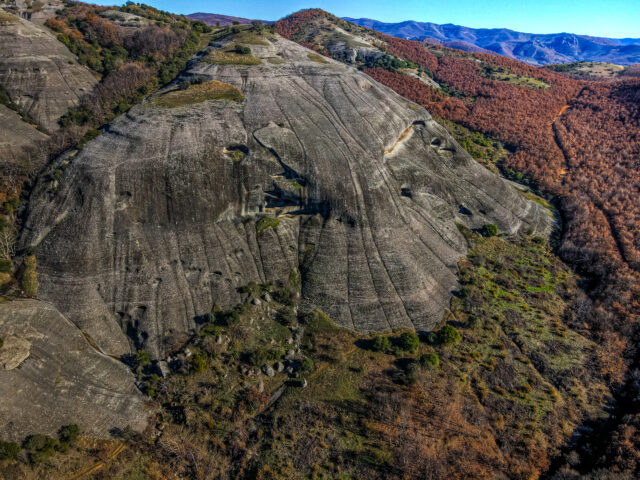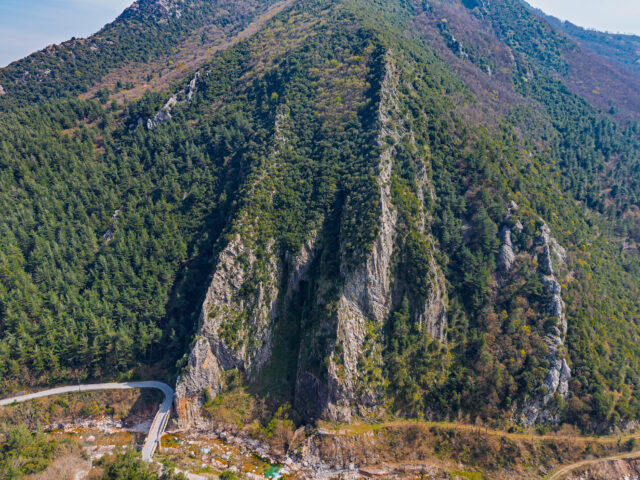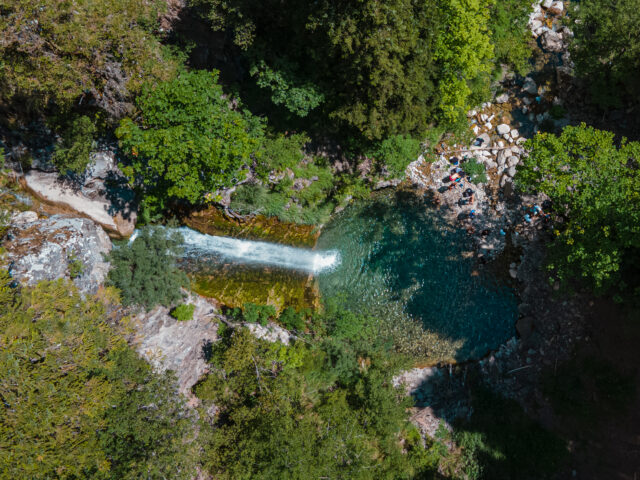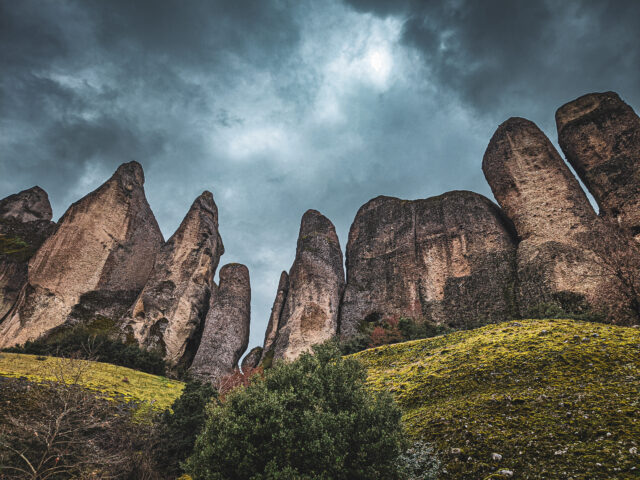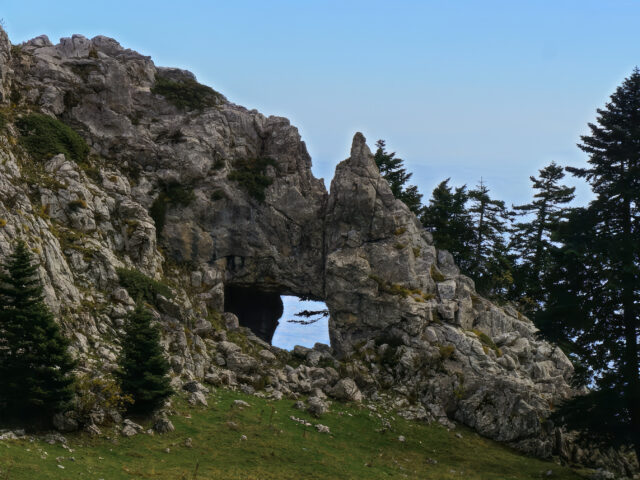Kalambaka’s Tafoni
Address
Kalambaka 422 00
GPS
39.710928215008, 21.635168144456
At the western exit of Kalambaka city towards Kastraki, we encounter the rocks “Amparia” and “Bandova” of the Meteora complex. These two rocks are part of the Meteora Conglomerates, which are 10-20 million years old. On the surface of these two rocks we observe the characteristic ellipsoidal cavities called “tafoni”. Tafoni are cellular weathering structures due to the selective erosion of the conglomerate rocks by the action of wind and water. We can see similar tafoni structures on other rocks of Meteora as well as on other occurrences of similar rock formations such as in Gavros, Agios Dimitrios and Sarakinas.
The Meteora Conglomerates consist of a series of cohesive conglomerates and sandstone beds, and are part of the Pentalofos-Meteora Formation of Upper Oligocene-Lower Miocene age (10-30 million years). Together with the Tsotili, Eptachori and Krania-Rizomatos Formations, they constitute deposits of a shallow sea, the Meso-Hellenic Trench, which was formed east of Pindus 40 million years ago. Today, the rocks of the Meso-Hellenic Trench occur in a NW-SE development zone from Kastoria to the Thessaly Plain. The Pentalofos-Meteora Formation can be seen in the Meteora-Pyli Geopark from the northern limits of the park with the prefecture of Grevena to Sarakina and Peristera in the south. The Meteora Conglomerates are Gilbert-type deltaic deposits. The conglomerates and sandstones (turbidites) were deposited 10-20 million years ago underwater, at the mouths of large rivers from the northernmost part of the Meso-Hellenic Trench. Gilbert-type deltaic deposits are also found in large areas in the northern coast of the Peloponnese (age > 5 million years) and are currently deposited underwater in the Gulf of Corinth (mouths of Selenitis, Vouraikos River, etc.).
Taphony as geomorphs are found in geological formations of different composition, with different mechanisms of genesis such as chemical erosion, weathering, etc. In the Meteora conglomerates, their appearance is mainly horizontal, as they follow the stratification of the formations. In some rocks we can also see large vertical tafoni. They develop mainly on the slopes of rocks with a south orientation, due to the greater influence of solar radiation and atmospheric conditions, something that has been observed worldwide. The layering of conglomerates and sandstones. Vertical cracks and faults fragment the rocks of Meteora and allow the circulation of water in the interior. At the same time, exposure to atmospheric conditions leads to differential erosion of the softer layers, with the gradual creation of ever larger tafoni cavities. The tafoni also grow by the lateral union of smaller cavities.
The large cavities of some tafoni in the form of rock shelters led to their exploitation by monks, as they were suitable for habitation and the creation of hermitages and cells, while at the same time offering security due to the difficulty of access.

